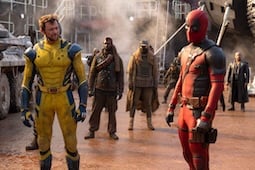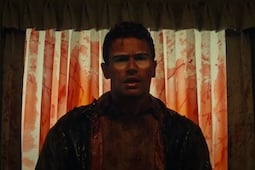
Alien: Romulus acts as our big-screen reunion with the scariest organism in the known universe: the xenomorph. The film is directed by Evil Dead and Don't Breathe filmmaker Fede Alvarez and promises to restore lean, mean, pared-down dignity to a long-running franchise that has recently been bogged down by overly explanatory backstory.
When a deep space crew lands on an apparently deserted space station, they cannot anticipate the horror they find there. It's the sort of quintessential, spine-tingling set-up that made the original Alien (released in 1979) such a terrifying masterpiece.
Alien: Romulus takes place between the events of Ridley Scott's Alien and James Cameron's Aliens (released in 1986). This exposes a lot of fascinating questions. Here are just a few of them.
1. is the film closer to Alien or Aliens?
We have an answer to this one. In an interview with Den of Geek, Alvarez confirmed that the movie takes place "20 years after the events of the first film", adding: “Technology in the world of Alien can change vastly, but I think it’s not dependent on time. It’s dependent on place. Where you are…
"So the characters of this movie and the world are very blue-collar. The technology is still very low-tech and analog. And, look, I’m a kid from the ‘80s. Any monitor with some VHS tracking issues puts a lot of joy in my heart.”
The Alien: Romulus trailer is adorned with these kinds of retro details, from the hissing doorways to the protruding, biomechanical hallways that clearly owe a debt to original Alien designer H.R. Giger. The trailer also utilises the chilling alarm sound from the original trailer for Alien, further establishing that this is a franchise returning to its roots.
2. Does Weyland-Yutani already know about Ripley's attempt to destroy the alien?
In Alien, it was revealed that the crew of the commercial space tug Nostromo were being used as guinea pigs to transport the xenomorph back to Earth. There, it would be utilised by the nefarious Weyland-Yutani corporation for its weapons division, or so Ellen Ripley (Sigourney Weaver) surmises.
At the end of Alien, Ripley destroys the Nostromo and plans to enter hypersleep, before she's alerted to the existence of the alien on her escape shuttle. Having blown the creature into deep space, she can finally settle down to a long sleep with Jones the cat.
Is Weyland-Yutani aware of this by the time Alien: Romulus begins, and have the characters in this film been established as the company's Plan B attempt to bring the alien back to Earth?
At the start of Aliens, once she's awoken from hypersleep, Ripley's destruction of the Nostromo and the alien seems to be news to the Weyland-Yutani bigwigs. But in hindsight, maybe they're bluffing under the knowledge they'd already tried again decades earlier with the characters from Alien: Romulus.
3. Is the movie connected to Alien: Isolation?
This is an interesting one. Released in 2014, the FPS PlayStation game Alien: Isolation reaped critical and commercial plaudits for immersing players in the nightmarish terror of the Alien universe.
More than that, it worked hard to establish storyline continuity with the events of Alien. The game centres around Amanda Ripley, the now grown-up daughter of Ellen Ripley. Amanda learns of the discovery of the Nostromo's flight recorder aboard the soon-to-be-commissioned space station Sevastopol and needless to say, absolute horror ensues.
Fede Alvarez is a confessed fan of the game and there's a chance Alien: Romulus could line up with the film. Think about it: in the extended cut of Aliens, Ripley laments the fact that she was never able to return to Earth for Amanda's 11th birthday, given Ripley was in hypersleep.
If we're assuming that Amanda was 11 around the time of Alien, and is in her late 20s/early 30's by the time Alien: Isolation begins, that gives us a gap of around 15 to 20 years between the two properties.
That's roughly the same span between the events of Alien and Alien: Romulus. Might there be a chance of a crossover between the game and the film?
4. Will Amanda Ripley appear in the film?
Continuing the theme above, we're wondering if Alien: Romulus will pull a big blind and feature an appearance from Amanda Ripley herself. The character has never appeared in live-action form in one of the films and it would help underline the tragedy of Ripley and the crew of the Nostromo.
5. Is one of the characters an android?
According to Empire Magazine, David Jonsson (star of the brilliant rom-com Rye Lane) plays the franchise's newest android, Andy. And it goes deeper than that: he's the foster sibling of the central character Rain Carradine, played by Priscilla and Civil War star Cailee Spaeny.
“When [Rain's] father was dying, he left Andy to be a kind of caretaker,” Alvarez explains. “But Andy is a bit damaged and he’s an older model. So more than a surrogate father, he becomes a younger brother to her. And that was always the heart of the story: this relationship between the two… and how that relationship unfolds once s**t hits the fan."
We can therefore assume that Andy will be leaning more towards the personality of the sympathetic Bishop (Lance Henriksen) from Aliens rather than the Nostromo's cold, calculating science officer Ash (Ian Holm) from Alien.
6. How does the crew in Alien: Romulus become exposed?
In Alien, the crew of the Nostromo was intentionally diverted to the planetoid LV-426 under the orders of the ship's computer Mother. They were ostensibly sent there to investigate a distress signal when in reality they were being sent as guinea pigs by Weyland-Yutani.
That's where they find the derelict alien spacecraft (the origins of which are filled in by the Ridley Scott-directed prequels Prometheus, released in 2012, and Alien: Covenant, released in 2017).
The Nostromo's crew then discovers the alien eggs that cause crew member Kane (John Hurt) to become infected with the parasitic xenomorph via a facehugger. The creature then erupts from Kane's chest when he's back on the Nostromo and later grows into an oversized monster, setting in motion the desperate battle for survival that results in Ripley escaping the vessel.
Assuming that this sequence of events isn't mirrored in Alien: Romulus, and to all intents and purposes from the trailer, it isn't, then how does the latest alien outbreak occur?
7. If there are facehuggers, is there an alien queen involved?
The Alien: Romulus trailer features a hideous outbreak of facehuggers, more than we've ever seen in an Alien film before. One's understanding of the alien's life cycle is conditional on whether one follows the events of Aliens, or whether one invests in a crucial deleted scene from Alien.
In Aliens, it was established that the facehugger eggs came from an alien queen, akin to bees in a hive. However, a cut scene from Alien establishes that the xenomorph cocoons its victims and leaves them to organically turn into eggs. We see this when a horrified Ripley discovers the cocooned bodies of Captain Dallas (Tom Skerrit) and Brett (Harry Dean Stanton).
Which of these two scenarios will play out in Alien: Romulus? The presence of a queen will likely result in more of a sense of menace; Alvarez has said that the second half of his film is akin to the pacing of Aliens, so we're wondering if he'll also pay homage to the continuity from that film.
That said, the cocoon theory hasn't really played out in any of the films and were it not for that one deleted scene, would likely have passed into obscurity. Maybe Alien: Romulus can resurrect this concept and alter our perception of the xenomorphs?
8. Has LV-426 already started to be colonised?
At the start of the Alien: Romulus trailer, there's a brief shot looking through a rainy window. We might be looking at one of the atmosphere processing stations that had been established by the LV-426 colonists before the events of Aliens.
Does Alien: Romulus line up with the onset of colonisation? In Aliens, Ripley is told that there have been colonists on LV-426 for "20 years", and she was in hypersleep for 57 years. That means colonisation started 37 years after she first escaped the Nostromo and went into hypersleep.
If we take Fede Alvarez at face value and assume that Alien: Romulus takes place exactly 20 years after Alien, then the timeline doesn't exactly match up. But if we don't take him at face value? Well, then we're looking at more fun ways in which he can play around with the mythology of this enduring franchise.
9. Will we find out what happened with David after Alien: Covenant?
At the end of the Ridley Scott-directed Alien: Covenant (2017) – spoilers incoming – the ruthless android David (Michael Fassbender) planned to unleash the facehugger embryos on Origae-6, a planet intended for human colonisation. The film ended before we witnessed his destructive act but we could picture it in our mind's eye given his ruthless elimination of the Engineers, mankind's ancestors, via a deadly airborne pathogen.
Given Alien: Romulus takes place after Alien: Covenant, has word spread of the carnage wrought on Origae-6? And given David is an android, is it safe to assume he hasn't aged and could be waiting in the shadows somewhere ready to hatch another deadly experiment?
Alien: Romulus is released at Cineworld cinemas on August 16th. Click the link below to book your tickets.













.jpg)
.png)






